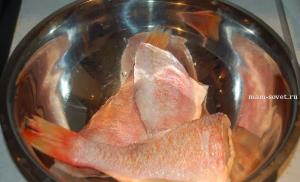Whether the tops of the carrots are cut. Do I need to cut carrot tops: figuring out how not to ruin the crop
Carrot- This is a vegetable that, if improperly prepared for storage, can not only lose its taste, but also deteriorate (rot). Therefore, it is very important to properly cut the tops of these root crops and correctly organize the place of their storage.
In order for the carrots to be preserved for as long as possible, you need to start harvesting them on time. The fact is that closer to the middle of autumn, rains become more frequent, it becomes cooler, which means that water stagnates in the soil, which in turn negatively affects root crops. Stagnation of moisture leads to the defeat of vegetables by fungal diseases. When harvesting carrots, damaged areas can be practically invisible, and if healthy fruits are stored together with the "sick" ones, they will inevitably "get sick" and be unusable. Therefore, if you live in Central Russia, then start harvesting carrots no later than the end of September.
First, carefully dig the roots out of the garden bed, being careful not to damage them. Never bump the dug carrots against each other to remove particles of soil, as this can lead to microcracks on the fruits and their shelf life will decrease significantly. If the carrot grows in sandy soil, then in this case it is enough just to shake it, holding it by the tops. For carrots growing in heavier soil, shaking will not be enough; here you cannot do without washing the fruits in warm water. After washing, it is very important to keep the crop hanging in a well-ventilated area for three days, after which you can start cutting the tops.
Trim carrot tops can be done in different ways, for example, if the desired shelf life of fruits does not exceed 3 months (or you are going to use carrots for growing seeds in the future), then in this case you can cut off the green part a couple of centimeters above the head of the vegetable if you if you want to enjoy delicious and fresh vegetables until next summer, then cut carrot tops it is necessary together with 2-3 mm of the head of the root crops themselves (if this is not done, then after 3-4 months the carrots will begin to germinate and become soft and tasteless). As for the storage of carrots, it is stored for the longest time in the sand at a temperature of 2-4 degrees Celsius.
Pay attention to this:
 |
 |
 |
| All about garden plants | ||
 |
 |
 |
 |
 |
 |
Many novice gardeners are interested in the question: is it necessary to cut the tops of carrots during the last stage of ripening of the vegetable? For example, it is now in August.
Experts answer: pruning carrots during growth is not recommended in any case. Like greens in any plant, carrot tops are involved in the process of photosynthesis. Saturation with useful microelements and vitamins continues.
Thus, if you cut the tops off earlier, then the growth of carrots will stop or they may even simply rot in the ground.
When to harvest carrots
The timing of harvesting carrots depends directly on its variety, planting time and weather conditions.
If we are talking about early varieties, then they can already be dug out from July-August.
Mid-season varieties most often ripen in August and early September.
Late varieties, which are most often grown for winter storage, are harvested in September and early October.
How to clean and store carrots
According to experienced gardeners, carrot tops are cut only after the roots have been dug up. So they will be stored much longer. Vegetables are dried in the air in good weather, and in the rain under a canopy or in a barn. Dry clean root crops are sent for storage.
To store, as experts advise, carrots should not be in bags, but in boxes. In order for the carrots to remain strong, fresh, not shriveled, they need a checked air temperature of up to two degrees Celsius with good humidity.
Carrots consist of two parts: a succulent root vegetable and a green mass, which ensures the process of photosynthesis. Many gardeners are wondering whether it is necessary to cut the tops of carrots? If so, when to remove the aerial part of the plant. 
The leaves of the carrot are cut off only after collecting it from the garden. It is necessary to carry out the removal of greens, observing certain rules so as not to damage the root crop.
Important! In no case should you cut off the tops when the carrot is growing in the garden. If you do this, the roots will begin to wither or rot.
Before trimming the tops, you need to dig up the vegetables and dry them. If they are too deep in the ground, then you can rinse and dry for several days so that the moisture completely evaporates.
Pruning is necessary so that the roots do not dry out from the fact that the green mass takes up nutrients and moisture, or does not rot.
The haulm removal technology depends on its storage time and purpose of use:
- if you cut it 2 centimeters higher from the head, then the carrots will be stored for up to three months. They use this technology for planting in the ground to obtain seed;
- if you cut the tops of 2 millimeters higher from the head, the germination process will be stopped and the root crop will be completely preserved for up to 6 months.
Harvesting of carrots takes place at the end of September, beginning of October, therefore, the pruning of the green part of the plant falls on this time.
Pruning rules

Observing the basic rules for cutting carrot tops, the vegetable will lie until the next harvest:
- You need to trim the tops on the same day when the roots were collected from the garden. Do not leave vegetables for a long time, they can wilt.
- Before pruning, peel the fruit off the ground and dry for several hours.
- You need to cut off the greens with a sharp knife. In no case, do not tear off the tops with your hands and do not twist it.
- Sprinkle the cut with chalk so that no fungi and microorganisms that provoke decay get there.
- After cutting, the vegetables are put in boxes, sprinkled with sand. Carrots are taken to the cellar or basement fourteen days after collection. During this time, the skin should be completely roughened, and if there are slightly rotten vegetables, they can be thrown away immediately without storing them.
Where can you use carrot tops

Juicy carrot stalks are an excellent ingredient for various dishes and healing infusions for diseases, but not everyone knows about it. Everyone is used to the idea that tops are a waste.
And, meanwhile, green mass can be used:
For the preparation of medicinal folk preparations:
- from hemorrhoids. To treat the disease, you need to make tea. Grind the green stems (fresh or dried), place one teaspoon in a cup and cover with boiling water. Insist half an hour. Drink no more than one cup per day. The course of treatment is 2 months;
- with allergic rashes, dermatitis. Place 2 tablespoons of chopped tops in a small container, pour boiling water over it, leave for several hours. Make lotions with the resulting infusion.
Important! Before using the tops as a treatment, check with your doctor.
In cooking. The stems are used in the preparation of various soups, casseroles, and other vegetables pickling. Greens can be dried, placed in plastic bags and stored in the freezer. For use, choose only green branches, without the slightest deformation.
The longer it stays in the garden, the more useful the carrots are, since it is in the autumn days that nutrients and vitamins are intensively accumulated in it. And at the same time, of all the root crops, perhaps, carrots have more than other vegetables; the size and quality of the harvest, and the safety of root crops in winter depend on the correct choice of harvest time.
To decide whether it's time to harvest the carrot or leave it in the ground for another 10-15 days, you just need to dig one or two root crops out of the ground. If the carrot is overgrown with small roots, then it's time, otherwise nimble rodents will get to it before us.
Early ripe carrots are usually harvested selectively as needed. At the same time, larger roots are first pulled out in order to improve the growth conditions of neighboring plants. In this case, it is necessary to immediately fill with earth all the voids formed after the pulled out plant in order to protect the "neighbors" in the garden from the carrot fly.
But many gardeners harvest early ripe carrots completely at once to make room for re-sowing of other vegetables. After the early carrots, bush beans, head lettuce, cauliflower, kohlrabi and broccoli are successfully grown.
Popular wisdom says: "On Cornelius (September 24), the root does not grow in the ground, but chills." In accordance with this sign, one must act, i.e. harvest the main crop of mid- and late-ripening carrots at the end of September, focusing on weather conditions.
Carrots are a cold-resistant crop and that it gives the most intensive yield increase (up to 40–45%) at the end of August and in September during the period of a gradual decrease in the average daily temperature. This is facilitated by the rapid outflow of nutrients from the leaves to the roots at a temperature of 7–8 ° C. The biological ripeness of root crops occurs after the end of intensive growth when the shape and color are typical for this variety. But under unfavorable conditions, at very high or low temperatures during the formation of root crops, the biological ripeness of carrots may not come, and then the roots have to be harvested at the stage of technical ripeness.
For various reasons, sometimes it is generally necessary to harvest this vegetable on the site in the first half of September, this leads to a large shortage of harvest and the receipt of small, not fully ripe root crops, which then quickly wither and are poorly stored.

The most favorable time for harvesting carrots in our plots should be considered the end of September. When harvesting during this time, you will get the maximum yield of carrots, which will be well stored in winter. Further long delay in harvesting does not give a positive effect, since if the daytime air temperature does not rise above 4–5 ° C, the outflow of nutrients from the leaves to the roots practically stops and the vegetable stops growing. Root crops of this culture in the soil tolerate a short-term drop in temperature to -3 ... -5 ° C, but if they are dug out of the ground, they cannot stand even the weakest frosts.
Carrots are harvested only in good weather. Varieties with short and semi-long root crops are easily pulled out of the ground by hands, but when harvesting long root crops, a pitchfork or a shovel is indispensable.
It should not be forgotten that carrots are very sensitive to mechanical damage. Therefore, when cleaning, transporting and storing it, it is necessary to carefully follow the generally accepted rules: do not allow shocks, breaks, scratches and other mechanical damage, because root crops poorly heal such damage, namely, rot pathogens penetrate through them.
You can not leave the tops uncut for a long time, because leaves, quickly evaporating moisture, will cause wilting of root crops, which will sharply reduce their resistance to diseases during storage. In addition, it is not necessary to completely clean the roots of the soil, as well as wash them, as this can accelerate the development of diseases. It is not recommended to keep the harvested carrots for a long time in heaps on the garden bed, because root crops wither quickly and become unsuitable for winter storage.
How to remove tops? Do not cut it off by twisting it with your hands, but carefully cut it with a knife. If, at the same time, leave small petioles, then closer to spring, tops will begin to grow on root crops, which will not only reduce the mass of carrots, but also dramatically worsen their nutritional value. Therefore, cut the roots with a knife along the line of the dormant eyes, i.e. cut off the top by 1-2 mm. In this case, the tops will not sprout during storage.
Immediately after cutting the tops, the root crops must be removed under a canopy and slightly ventilated before laying in boxes. Then the harvested crop is sorted, removing diseased, damaged and soft roots. They are used immediately for food or for processing, without leaving them for winter storage. After that, the carrots selected for winter storage must be kept in a dark and cool room for 5–6 days so that they cool well, and only then can they be stored in the basement after being chilled.
Harvesting of carrots must be completed before the onset of cold weather, since root crops damaged by frost loses their resistance to pathogens. During temporary storage, root crops are covered with soil with a layer of 15-20 cm. It is impossible to cover them with straw or tops, since after harvesting they release a lot of moisture, and moistening the straw and tops creates conditions for the development of diseases.
The newspaper "Ural gardener" No. 37, 2012
Attention: Carrots are sensitive to external influences due to their structure and their skin is very thin. In case of errors in storage, it quickly becomes flabby, withers and rots, and is affected by pests.
In carrots, the percentage of water is high - up to 80%... Therefore, any negative impact - very humid, damp or dry air in the place of its storage - is unfavorable. The moisture from the root vegetables evaporates and the carrots wilt.
The microclimate in storage areas should be constant: without temperature fluctuations and sudden changes in humidity. Carrots will be well stored and have a presentation if you create the right conditions:
- Observe the optimum storage temperature not exceeding 2 ° C.
- Provide air ventilation. Do not create drafts.
- The air humidity should be high, at least 90%.
Carrots will be reliably stored if artificial air ventilation is created in the storage, and the optimum temperature and humidity are constantly maintained.
Choosing the right variety
Choosing the right variety for long-term storage is an important condition for guaranteeing success.... They should be of high density, not affected by diseases, without mechanical damage.
It is advisable not to use early varieties of root crops for laying for the winter. The moisture from them evaporates quickly, it is better to use them fresh. But, if the summer is short and rainy, then later varieties do not ripen completely, do not accumulate sugar and fiber, which means their keeping quality is low.
When buying seeds, you should pay attention to the following characteristics of the variety:
- the fruit must have the correct shape;
- have a high yield;
- keep well.
- Moscow winter... High-yielding, with medium ripeness, can be stored for up to a year.
- Shantane... Refers to mid-season and high-yielding varieties. The vegetable is juicy, with a sweet taste and pleasant smell. The shelf life is about 10 months.
- Nantes... An early variety, but if the conditions are met, the shelf life is from 8 to 10 months. Has excellent taste.
The following varieties are also characterized by high keeping quality:
- Forto.
- Vita Longa.
- The Queen of Autumn.
- Karlena.
- Vitamin 6.
- Samson Cascade.
- Nigel.
What is cropping and why is it needed?
Trimming root vegetables - the procedure for removing tops from vegetables... It helps to preserve useful substances in carrots, stops rotting, drying out and, as a result, spoilage of the entire crop.
The foliage left on the root vegetable soon begins to actively grow, taking water and useful trace elements from the vegetable. Therefore, this process is mandatory.
When pruning carrots, it is advisable to take into account the shelf life:
- up to 3-4 months- the tops are cut 2-3 cm above the head of the fetus;
- up to 10-12 months- the tops are trimmed together with the head of the vegetable by 2 or 3 centimeters, thus, the vegetables are prepared for long-term storage.
When the pruning is deep, with the capture of a part of the vegetable, the process of fruit germination stops. This means that they remain juicy, their taste is preserved. If the carrots are intended for seeds, then the green part of the plant is cut off, leaving 2 cm.
Do I need to prune if you store the vegetable in the cellar?
Whatever the storage technology, it is necessary to cut the tops from carrots... For storage in a cellar, this procedure is required! The knife should be very sharp so that no hemp or cuttings remain on the carrots. In the cellar, such carrots will not be able to germinate, which means they will retain their taste and useful properties.
Detailed instructions on how to do it
Immediately after harvesting the carrots, on the same day, dry them and, in warm sunny weather, you need to start pruning. Correctly pruning carrots is a very important process, which ultimately determines whether the entire crop is preserved. It is sometimes recommended to remove the tops before harvesting. But in this case, it will be inconvenient to pull vegetables out of the ground.
Do not remove the tops by curling, tearing or breaking.... This can damage the root crop.
Let's describe in detail the process of properly pruning carrots:
- You need to sharpen a knife or scissors well so that they are as sharp as possible.
- Since carrots are fragile vegetables, they can break with any carelessness. Therefore, pruning is carried out in two stages: first you need to remove the leaves from the root crops.
- Then cut off the tops. How can you cut it off? This should be done by grabbing a few centimeters of the root crop. How far the cut is below the head of the vegetable depends on the storage purpose.
- Chalk is sometimes applied to a fresh cut for a reliable result.
- Carefully make sure that no growth points or hemp remain at the cut site.
- Place roots in a cool, dry, well-ventilated area. Wait until the cut surface on each vegetable is covered with a dry crust.
- After that, look at the harvested crop again and sift out the blackened or spoiled roots.
- Take the carrots to storage.
Ways to save
There are several proven and successful ways to store pruned carrots well.
Wooden or plastic boxes in the basement
The boxes must be installed no closer than 15-20 cm from the storage wall, due to possible dampness. It is better to install the box with root vegetables on a stand or shelf.
Advice: The container volume should be taken at the rate of 15-20 kg of root crops per container.
Types of fillers in boxes:

Watch a video on how to store carrots:
Polyethylene bags
When storing carrots in bags, you can choose a container of any volume, but up to 25-30 kg. It is better to use small packages, designed for 1.5-2 kg, so that it is easier to transport and identify spoilage among root crops.
Pre-prepared root crops are packed in tight bags, lowered into the basement or placed in a cool and dry warehouse. It is necessary to place the bags on the shelves or on a special stand.
Do not close the bags, or make many small holes at the bottom... This is necessary for ventilation so that condensation does not accumulate inside the bag. If, nevertheless, the condensation increases, then you can scatter substances that absorb moisture.
The advantages of this method:
- high air humidity in bags;
- the purity of root crops during storage;
- rodent protection;
- any place in the room or cellar is suitable for placing bags.
But with this method of storage, part of the taste of carrots is lost.
Watch a video about storing carrots in plastic bags:
In a saucepan or jar
One of the storage methods is that the prepared root vegetables are placed in enamel pots or aluminum cans. In this case, the roots in containers are stacked vertically... A lid is placed on top. This method is suitable for cool environments.
Simple bulk method
 Deprecated method. Carrots are poured in a slide on the floor in the cellar or basement. With this method, the crop is in danger of being eaten by rodents. In such a heap, roots can dry out faster.
Deprecated method. Carrots are poured in a slide on the floor in the cellar or basement. With this method, the crop is in danger of being eaten by rodents. In such a heap, roots can dry out faster.
Depending on which technology is chosen, the shelf life of carrots changes.:
- in a clay or chalk "shirt" it will last the longest - within a year;
- in containers in which sand, sawdust, onion husks are poured - no more than 8 months;
- poured on the floor or in boxes without fillers - up to six months;
- packed in polyethylene bags, cellophane bags - no more than six months.
Possible problems
During storage, carrots can rot, lose taste, reduce weight, and lose marketability. Care must be taken to ensure that this does not happen. To do this, take the necessary measures:
- make sure that moisture does not evaporate;
- maintain a constant temperature regime;
- ensure good ventilation and air exchange in the room;
- regularly sort out and inspect root crops;
- remove damaged fruits, especially those affected by rot;
- in partially spoiled vegetables, remove the rotting area and treat the rest using a solution of slaked lime or chalk.
Here are some tips and warnings when storing carrots:
- It is very important already at the stage when the harvest takes place, to discard all damaged roots. High keeping quality is observed only in ripe and healthy specimens.
- So that microcracks do not form on the carrots, which reduce the shelf life, it is not recommended to shake off the soil from the vegetables after digging, tap them.
- After trimming the tops from the carrots, be sure to wait until the cut dries up and tightens with a crust.
- You need to dry not only carrots, but also storage. It should be dry and cool.
- If there is a threat of freezing vegetables in the basement, then you can wrap containers with carrots with any of the thermal insulation materials.
- Carrots should be kept out of direct sunlight. It is necessary to monitor the moisture in the room so that it is optimal.
- It is necessary to act according to the principle: the smaller the fruit, the sooner it is allowed to be processed. Large large root vegetables are better stored.
- If carrots are infected with rot, do not touch the roots. Very carefully remove the infected fruits and spray this area with fluff lime to eliminate the focus of infection.
Important: The most unsuitable neighbors for carrots are apples. Ethylene released from fruits has a negative impact on the palatability of the root crop.
Having familiarized themselves with the storage methods and the process of cutting carrots, each gardener will be able not only to grow a good harvest, but also to take advantage of the results of his labor. A properly preserved vegetable is a source of vitamins and delicious food for the winter table.
If you find an error, please select a piece of text and press Ctrl + Enter.













